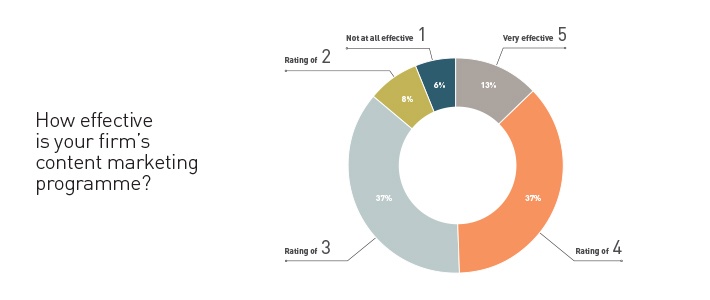In February 2016 I was asked to give a presentation to the PM Forum on best practice content marketing for professional services firms. Prior to the sold-out event, Grist surveyed the attendees (senior marketing and communications professionals at a range of professional services firms) to gauge their views. We discovered that a lack of best practice hinders their effectiveness.
Here are the key takeaways from the survey:
How effective is your firm’s content marketing programme?
Although most attendees (74%) believe that their content is okay (giving it a score of 3 or 4 out of 5), only 13% believe it to be ‘very effective’. And a disconcerting 6% believe that their content is ‘not at all effective’!
Nearly 90% of attendees do not believe that their content marketing programmes are ‘very effective’. This presents a huge opportunity. If, as an industry, we were to raise our game just one point in our scale through the adoption of best practice – a full 50% would be producing ‘very effective’ content. Think of the benefit – to both the firm, and the client. So what is stopping us?
What are the main obstacles to content marketing success?
Half of the attendees say ‘budget’ is an obstacle and 38% cite a lack of ‘skilled internal resource / expertise’.
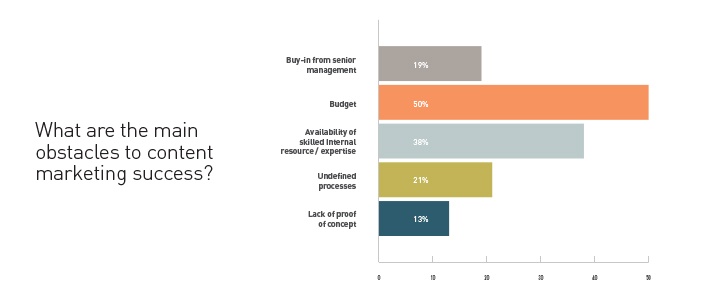
A lack of available budget or resource is never a surprise in professional services marketing, but it is puzzling how few attendees cite ‘buy-in from senior management’ or ‘lack of proof of concept’ as the main obstacle. Surely greater buy-in from senior management will facilitate greater resource, and a stronger proof of concept will loosen the purse strings? Either way, presenting a strong business case to the executive team should help. So how do these problems manifest themselves?
How successful do you feel your organisation is at creating content that clients really want to engage with?
Only 1 in 3 attendees (33%) believe that they produce engaging content that addresses clients’ issues. Over a third (36%) either ‘tend to write what partners want to write about’ or just don’t know if they are creating content their clients would want to engage with.
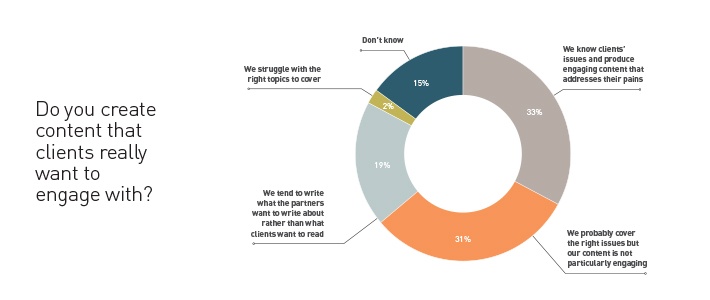
Creating engaging copy from seemingly dull subject matter is one of the core challenges we come across. There is plenty of marketing copy out there that promotes a service offering effectively, but is of limited value to clients. There is also plenty of editorial out there, from trade journals to the national press, that may engage clients but does little or nothing for your marketing needs.
The art is to find that sweet spot in the middle: addressing the issues that matter most to your clients, while getting your messages across and reinforcing your brand positioning as experts in the field.
Which of the following best describes your approach to content distribution?
37% of attendees say they know the channels their clients frequent and use them systematically. But, at the other end of the spectrum, 17% say they typically use the same channels they always have.
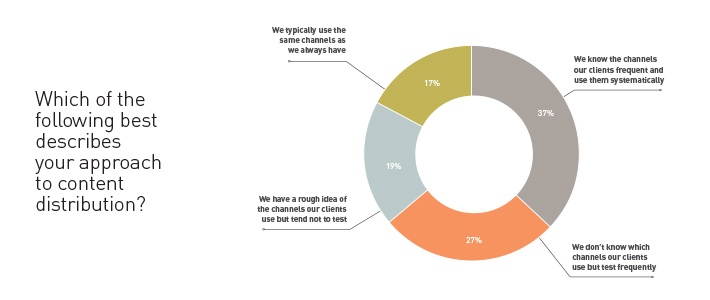
It is just as important to know which channels you should be using as it is to know what you should be writing about. A ‘build it and they will come’ philosophy won’t work for content marketing. Use personas and consult directly with your clients to find out where they go to find the answers to their questions, or you risk squandering the hard-fought budget you have.
How effective do you feel your organisation is at measuring return on investment?
Only 31% of attendees measure their success against a defined content marketing strategy. So 2 in 3 either don’t have a strategy or have one but don’t measure its impact.
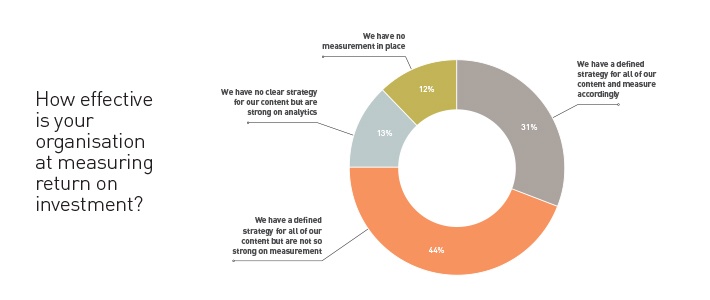
A strategy is crucial for success. In order to measure ROI effectively, KPIs need to be defined before the content is created in order to track them. By clearly establishing the goals and objectives of every piece of content at the outset, you can measure success, learn from your experience and make continuous improvements.
Final thoughts
Best practice separates the winners from the losers. This requires clear planning, built on a detailed understanding of your objectives and target audience. You need a professional process to raise the quality of the content produced and a distribution programme that gets the content to the client where, when and how they want it. And finally you need a systematic process of measurement derived from clear objectives to refine direction and demonstrate ROI.
None of this is rocket science and all can be achieved in a couple of well-conceived and professionally run workshops. But firms need to act quickly to avoid being left behind.

